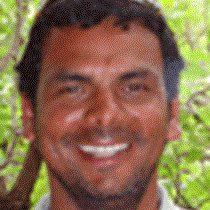National Geographic Endeavour is anchored at the western coast of the island of Santiago early this morning. This island is the fourth largest in the archipelago, and named after King James by English speaking visitors, as well as San Salvador by the Spanish who discovered the Islands in 1535. The history written by the people who came before us suggests that this is the island where young naturalist Charles Darwin performed the largest of his collections in this archipelago—something understandable once we know he camped on this island for nine days during his time here.
Today, almost at sunrise, our explorers planned a walk into a giant Palo Santo tree forest. This is an ideal location to better understand the complex adaptation of the vegetation in this environment, which resembles a desert. The company of young Galapagos hawks animated the scenery, which is dense and green in some areas. The morning ended with a fascinating red beach where the Zodiacs took us back to the ship for breakfast.
We had time after the first meal of the day to organize the aquatic activities that go with deep water snorkeling—kayaking and glass-bottom boat riding at Buccaneer Cove. Afterwards, we rested a bit for the afternoon at Puerto Egas.
The afternoon adventure began with snorkeling from the beach, close to a rocky reef where the aggregations of fish seemed to be endless. Following that the explorers were organized into groups to go along the tidal coast in search of shorebirds. At the end of the glorious coast we reached the grottos to relax close to the Galapagos fur seals and the peaceful sea lions. Today in Santiago was just one more day of a great Galapagos adventure.







